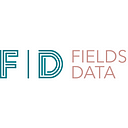How Google Colaboratory Can Lower the Barrier of Entry Into Data Science for Nonprofits
Data science can be an overwhelming space to enter. You may find yourself unsure of where to start, given all the installations that need to be completed before you can even begin thinking about the coding aspect. To complicate things even further, there are seemingly endless options of packages to install, each with their own associated package management systems. The good news is that there is a tool that is helping novices navigate this space.
Due to the domain knowledge required to enter the world of programming, Python, and data science more generally, remains largely out of reach for most nonprofits in developing countries. One of the main reasons being that a robust, private computer is usually required for installations and analysis. This can be financially challenging for organizations with limited resources, on top of the fact that a computer cannot always be carried around in the field. However, there is a solution to these major issues that can lower the barrier of entry into data science.
Google Colaboratory (Google Colab for short) is a free, cloud-based tool that allows packages to be installed and used without having to download any software directly to your computer. It is ideal for organizations that cannot afford to purchase their own computers, or individuals where investing in a computer is not practical due to the amount of time they spend in areas with limited internet access. In these situations, organizations can use internet cafes or public libraries to implement packages and code at a low cost.
Google Colab enables you to install and run packages on the cloud rather than on the computer itself. Therefore if you are using a public computer, you will not need to worry about ruining its hardware.
An additional benefit of using Google Colab is its ability to connect to your Google Drive to both retrieve CSV files for analysis, as well as save “notebooks” — with both the code and its outputs saved. This is particularly useful to nonprofits, which tend to store the majority of their datasets in Google Drive based on their relatively small size.
My favorite feature, however, is the ease with which you can share the document. It works exactly like sharing a Google Doc. You simply edit the file’s sharing settings, and send the link. This allows multiple users to not only view the work “live”, but also simultaneously collaborate with one another on the code, facilitating the sharing of coded analysis and visualizations.
For more advanced analysis involving machine learning, Google Colab comes with free GPUs and TPUs and is well integrated with TensorFlow. Ultimately, Google Colab provides the opportunity to connect communities that have remained in the shadows of innovation.
Note: This article is not sponsored by Google. It is merely a tool that I have found to be successful in introducing others to data science.

